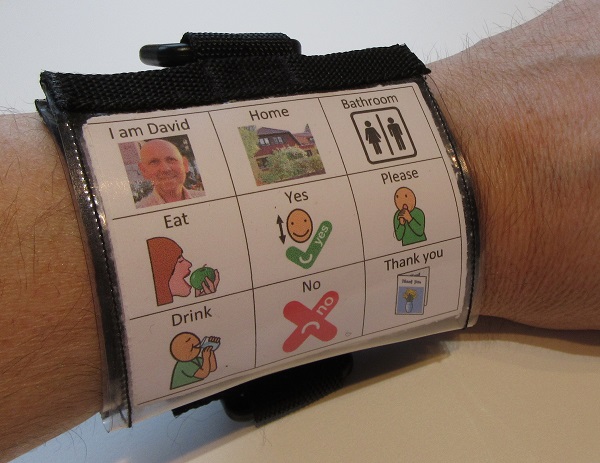
Wrist communication aid.
Ability World Ltd
Manufacturer's Product Description
Ability World's innovative Wrist Communication Aid enables effective communication in a highly convenient, easy-to-use package. Key features: Three viewable communication pages - the front page is permanently viewable; D-ring facilitates easy opening to display the two inside communication pages The 2 clear plastic pockets are, internally, 8cm wide and 6.5cm high (front and inside lower) or 6cm high (inside upper page) Soft backing is comfortable on wrist Fits wrist sizes with circumference approx 160 - 210mm - adjustable Velcro brand hook and loop closure, with D-ring to make fitting and removal easy (if you need a smaller or larger size, please contact Ability World) Waterproof Washable (hand wash) NB: TalkAbility symbols shown in main images not included.
Manufacturer's Contact Details
Ability World Ltd
43 Svenskaby
Orton Wistow
Peterborough
Cambridgeshire
PE26YZ
UK
03454747245 enquiries@ability-world.comKey Features
- three viewable communication pages, front page is permanently viewable
- clear plastic pockets
- D-ring opening
- soft backing
- Velcro hook and loop closure
- waterproof
- hand washable
Product Dimensions
No dimensions have been specified for this product
Product Specification
No product specification has been specified.